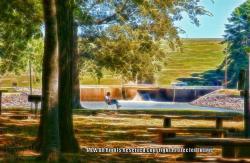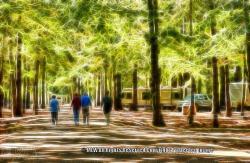Forward Motion---Negative Space---Stopping the Eye---Creating Tension
The illusion of movement in a photograph is often created using the element of "forward motion," which is accomplished in different ways. It could often be a line that leads you into the scene, like a fence or railroad track, a line of trees, even repetition of different elements, such as color, within the composition can have this effect. These take your eye along the line with them, moving your eye into the scene and you often get the experience of depth within the photo depending on where the line begins. The illusion of depth is often hard to translate onto a photo because you're obviously dealing with a two-dimensional representation of a three-dimensional reality. It's a very difficult element to re-create, but, using forward motion will help you simulate it very well. Look for those natural elements that can draw you into the photo and create forward motion.
There's a photo technique known as HDR, "High Dynamic Range," used by those familiar with raw files which converts various exposures for the same image which are then combined for maximum dynamic range. This renders them with more depth and three dimensional qualities. There's also a technique of layering the same in Photoshop which greatly enhances the 3 dimensionality of photographs. I don't know how to use it and don't own it as yet. As I understand it, it involves layering your photo with elements within various copies of the same image. I can't speak directly to either technique, but, maybe someone else can take it up for those more advanced photographers.
In action shots, where you want to show an object in motion, maybe it's a child on a bicycle, or, a bird in flight, you'll want to leave some room in front of them for the natural movement of the subject in action to unfold. In action shots another form of motion can be readily achieved by means of a technique known as "panning" which allows you to keep parts of the subject blurred while rendering others as "stopped in action," or, simply known as the, "stop-action" technique. If you completely stop the illusion of motion, though, it certainly won't have as dramatic an effect of movement that panning does. Panning is achieved by moving your camera along with the subject, basically physically following it's motion with your camera, and then taking the photo. What you'll find is that some part of the photo will be stopped while another will be blurred giving the illusion of movement. If, however, you're using a fast ISO and you've chosen a very fast shutter speed you'll have an object that will be stopped rather than partially blurred. So using a speed of 400 or less will allow you to pan and blur the image. It's an easy technique to master and the effects it renders are hard to get wrong. Give it a try and see what effects you can create with panning!
In portraits, forward motion would be represented by the direction of your subject's gaze. Leaving "negative space" in the direction of their gaze or the direction their body is pointing in allows your eye and, consequently, your mind to move in that direction. It has you wondering what it is they're thinking, or, gazing at, as long as you can't see it that is. Just as in real life, when it comes to faces, a person's eyes are the things we notice first. If you're dealing with the whole person in the shot, the principle is the same. It doesn't matter where their body is placed in relation to their eyes, because even if their body is facing forward and their eyes are looking right or left, even turning their head to look behind them, you're going to naturally want to mentally follow their gaze and your curiosity is to discover what it is that's drawn their attention. If they're walking, or, facing in a certain direction then the direction they're headed in is where you would place some negative space. If they're walking along the beach you'll want to leave some negative space in front of them, same with walking away from you by putting some negative space behind them. Negative space can also be used to draw you into the photo by keeping your point of interest beyond the area of negative space. If there is nothing of interest your eye and mind will move on until it encounters another object. When using forward motion, don't crowd your subject---give them some room.
So, what is negative space? Well, simply put it's any space surrounding the main subject (the positive space) within the photo. It can often be space that's absent of any major distractions, but, not always. It doesn't necessarily have to be "completely" empty of anything at all, though, to be considered negative space. It could just as easily be the blank wall of a building, or, the wide expanse of the sky. Maybe it's a blacked out area, or, one filled with light or white elements. In some cases it could even be a repetitive pattern that takes up a large expanse of space and in that regard is registered by the mind as inconsequential. Just imagine any uncluttered space where your eye doesn't usually stop to rest or have anything to distract it. Negative space can be used to create a sense of "balance" too, and I'll talk more about that in another tutorial. Often times it's a happy accident and other times it's well planned. Most compositions will contain restful areas of negative space that you're not consciously aware of---well, maybe before you came across my tutorials...now, however, you'll be seeing them everywhere! You don't want to keep the mind so busy and the eyes darting here and there forever. And, having said that----sometimes you might... That's the joy of knowing when to do what. Each individual element should relate to the whole and help to tell the story and support your main subject. It really all depends on the tone and the mood you want to set. Anything that keeps the eye in motion is an additional element of the whole and should be supportive of the main subject. Any object found within the negative space is to some degree a distraction with the potential to create "tension" to one degree or another. Some objects are more useful, pleasing and supportive than others, sometimes they're deliberate and then there are those that just don't belong in the composition and are completely at odds with everything else, especially with the main subject. When you're framing your shot, be aware of negative space and those things that may detract from your subject.
A wider expanse of negative space allows for a minimalist and often calming effect that puts much more emphasis on your subject. If you place an object within the negative space of forward motion, for instance, you've just caused the eye to be stopped in it's wanderings. If you do it deliberately, make sure it's a natural part of the composition, otherwise, it will cause unintentional tension within the photo and leave your viewer perturbed and at a loss as to where to go next because they're fixated on that element. You want the eye to flow around the photo taking in all the elements on a subconscious level in relationship to the main subject. When you have too much clutter or nonessential elements in your photo your eye and mind is pulled away from the main subject and sometimes it's swallowed up completely. When you throw up a road block, stopping the eye in it's wanderings, you've just brought them out of their revelry and forced them to mentally deal with the tension it creates. It's psychological, of course, and it's subliminal, but, as the photographer you're the one responsible for their reaction so you need to consider carefully whether or not it's the reaction you intended. When I talk about editing your photo and cropping it for best presentation you'll notice that you can sometimes crop the distraction out completely and no one will every know it existed (but you). Be aware of excess clutter and distractions within the negative space around your subject. Sometimes just by shifting your position, or, changing the depth of field you can often eliminate many of them.
Let me say, though, that deliberately creating tension is a perfectly acceptable element within a composition. It demands attention and is a useful tool in creating the intended mood, especially that of shock and awe. Edgy photos will incorporate elements that cause tension. When you're viewing photographs and you find yourself brought up short by something in them ask yourself whether it was deliberate or not and in what ways it adds or subtracts from the main subject and the composition as a whole. In a good composition you should be able to tell the difference as it relates to the whole.
I've once again borrowed some photographs from Google Creative Commons Images and a Creative Commons website here:
http://pixabay.com/en/photos/?...
Keeping those 4 elements in mind, Forward Motion---Negative Space---Stopping the Eye---Creating Tension, study the following photographs and notice those that use it effectively as well as those that contain distracting elements.
Thanks for tuning in!
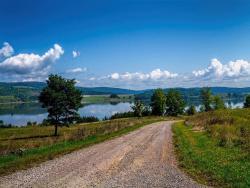
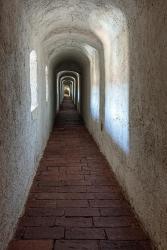
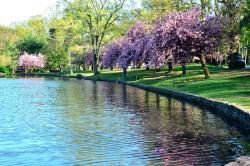

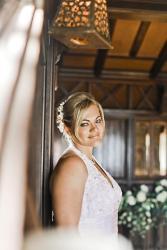
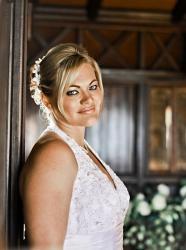
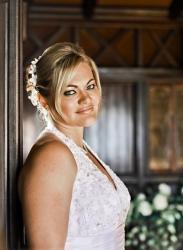
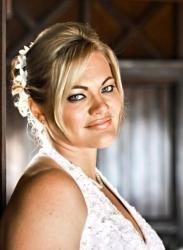



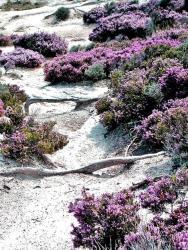


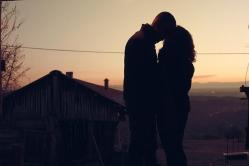

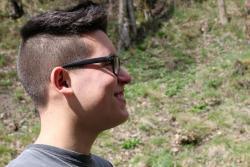
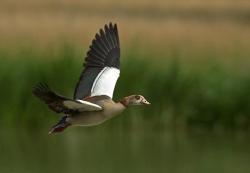
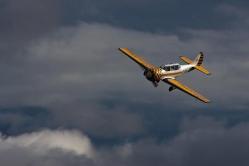
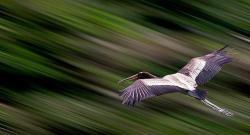 by Rajaraman Sanjeevi -- Wikicommons
by Rajaraman Sanjeevi -- Wikicommons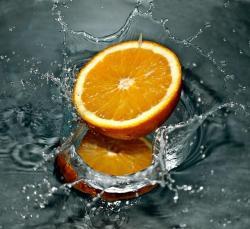
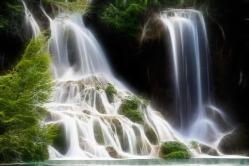 Photo by Frank Winkler
Photo by Frank Winkler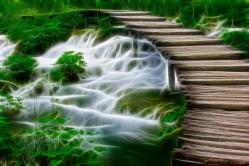 by Frank Winkler
by Frank Winkler
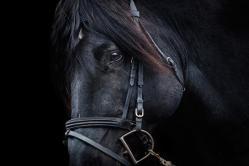
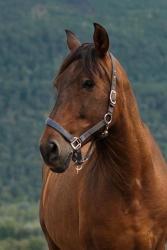 by Ron Porter
by Ron Porter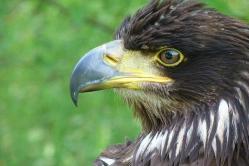 by Ron Porter
by Ron Porter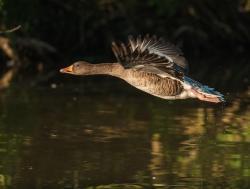 unedited
unedited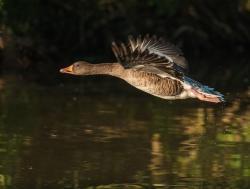 edited
edited
Photo by Frank Winkler
by Frank Winkler
